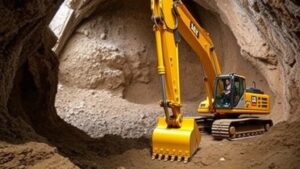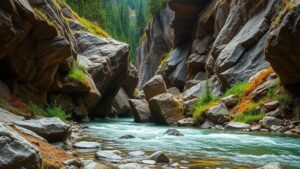How to Use Geologic Maps to Locate Copper-Bearing Zones
Understanding Geologic Maps
Geologic maps are essential tools for geologists and mineral explorers. They provide a visual representation of the spatial arrangement of various rock types and geological features at the Earths surface. When locating copper-bearing zones, these maps are invaluable as they may highlight areas with historical mining operations, mineral deposits, and various geological formations.
Components of Geologic Maps
Geologic maps contain several critical components, including:
- Legend: This section explains the symbols and colors used to represent different geological formations.
- Scale: A scale indicator helps determine the actual distances represented on the map.
- Slope and Orientation: Contour lines indicate elevation and terrain features, while dip symbols denote the angle and direction of rock layers.
Identifying Copper Deposits on Geologic Maps
To effectively locate copper-bearing zones, geologists focus on certain formations and features that are commonly associated with copper deposits.
Structural Controls That Influence Mineralization
Copper mineralization is often influenced by structural geological features such as:
- Faults: These fractures in the Earths crust can serve as pathways for mineral-laden fluids, leading to localized concentrations of copper.
- Folds: Folding in rock layers can trap mineral deposits, making certain regions more favorable for exploration.
For example, the Bingham Canyon Mine in Utah showcases how geological structures influence mineralization. porphyry copper deposit is situated within a complex of fault systems and intrusive igneous rocks, which are well-documented on local geologic maps.
Rock Types Associated with Copper Deposits
Different rock types are associated with copper deposits, notably:
- Igneous Rocks: Volcanic and granitic rocks commonly host porphyry copper deposits.
- Sedimentary Rocks: Certain sedimentary formations, particularly those rich in organic materials, can be sources of secondary copper deposits.
For example, the Morenci Mine in Arizona is predominantly found in a schist, which is a metamorphic rock that has been proven to be conducive to copper deposits when subjected to hydrothermal processes.
Utilizing Geologic Maps for Exploration
Once the relevant geologic maps are studied, the next step involves integrating this data with field exploration techniques to precisely locate copper-bearing zones.
Field Verification of Map Data
On-site investigations must verify the geological features indicated on the maps. Techniques include:
- Rock Sampling: Collecting and analyzing rock samples from potential copper zones confirms the presence of mineralization.
- Geophysical Surveys: Techniques such as electromagnetics and magnetometry complement traditional mapping by detecting subsurface structures.
These verification methods enhance the reliability of the identified copper zones. For example, a geologist may reference a geologic map showing a fault near a historical mining site and conduct a geophysical survey to explore deeper, thereby increasing the chances of discovering new copper veins.
Data Integration and Analysis
Geologists often employ Geographic Information Systems (GIS) to integrate map data with other datasets, such as soil chemistry, topography, and previous exploration results. This comprehensive analysis can highlight prefeasible areas for detailed exploration.
A case study displaying this integration is the Grasberg Mine in Indonesia, where detailed GIS analysis led to the successful discovery of significant copper resources outside known deposits.
Actionable Takeaways
Using geologic maps can significantly guide the exploration of copper-bearing zones by:
- Carefully analyzing the maps for structural features and mineral associations.
- Engaging in field verification to confirm the geological data presented in the maps.
- Integrating geologic map data with advanced technologies such as GIS and geophysical methods for more informed decision-making.
By following this structured approach, geologists can enhance their exploration efficiency and optimize the chances of locating economically viable copper deposits.


